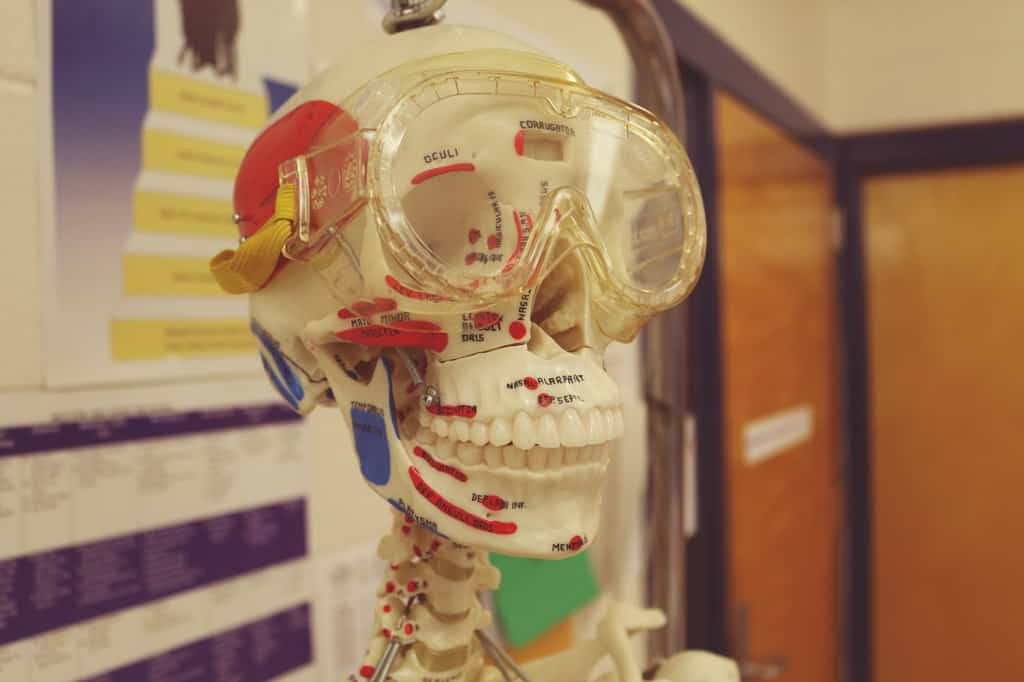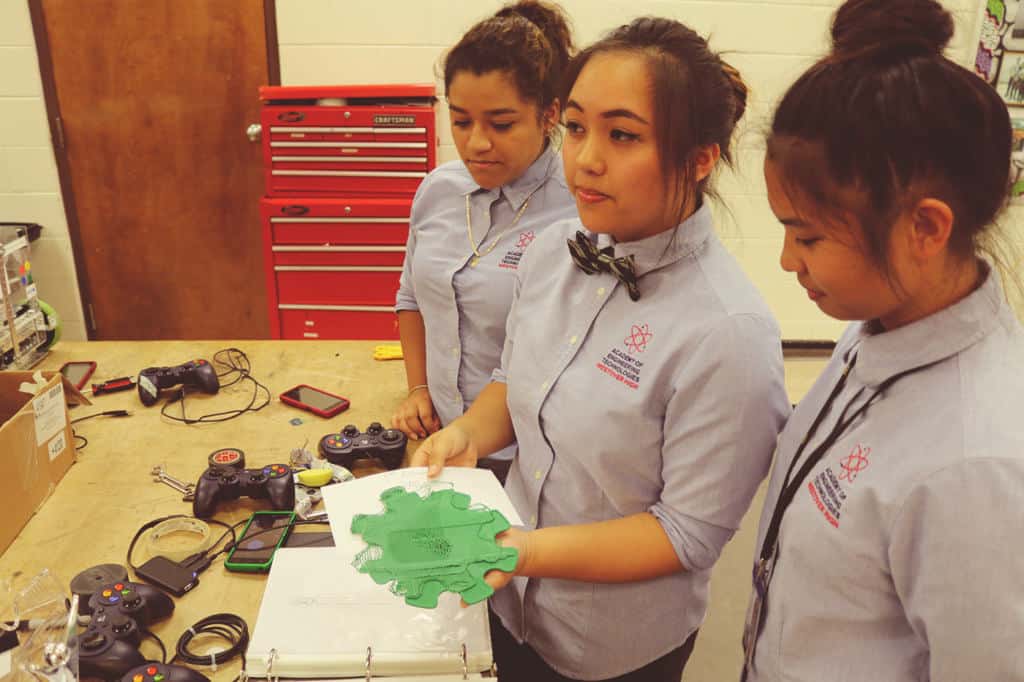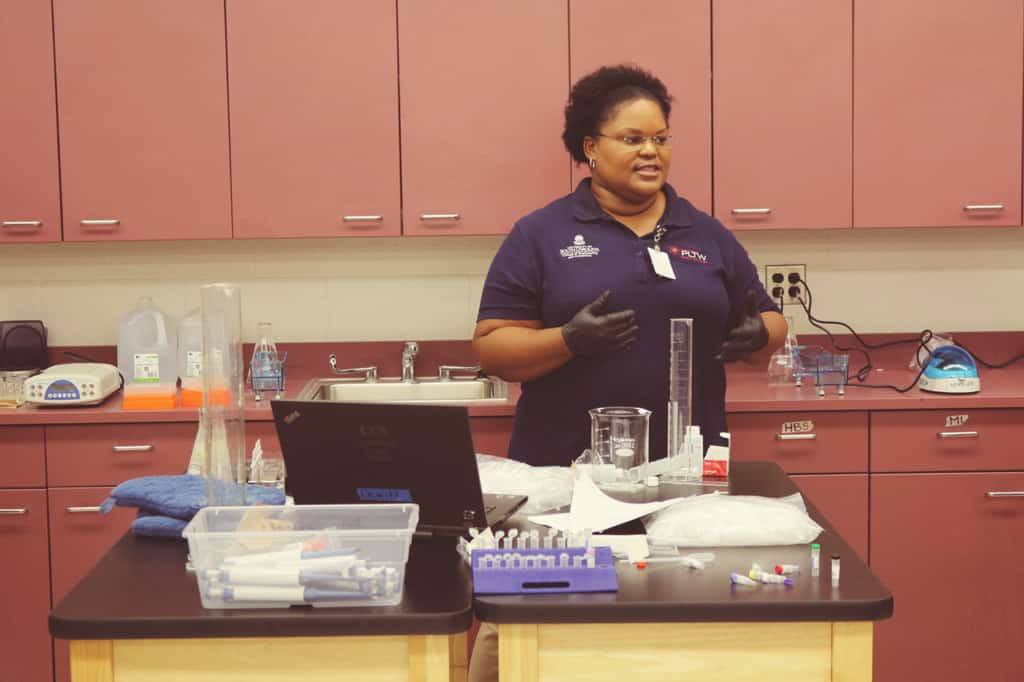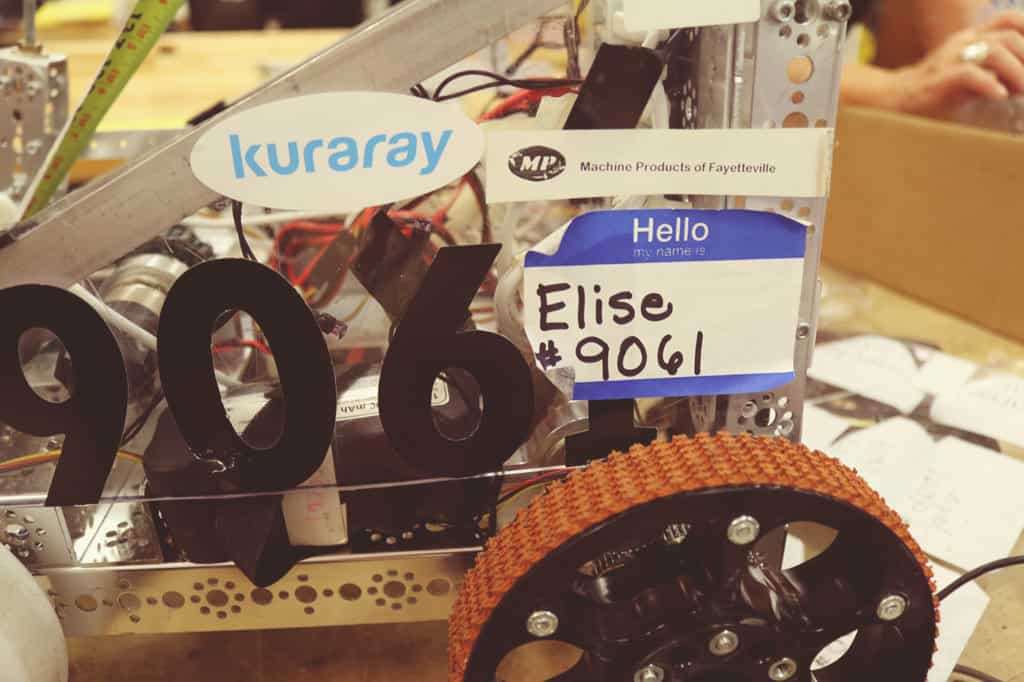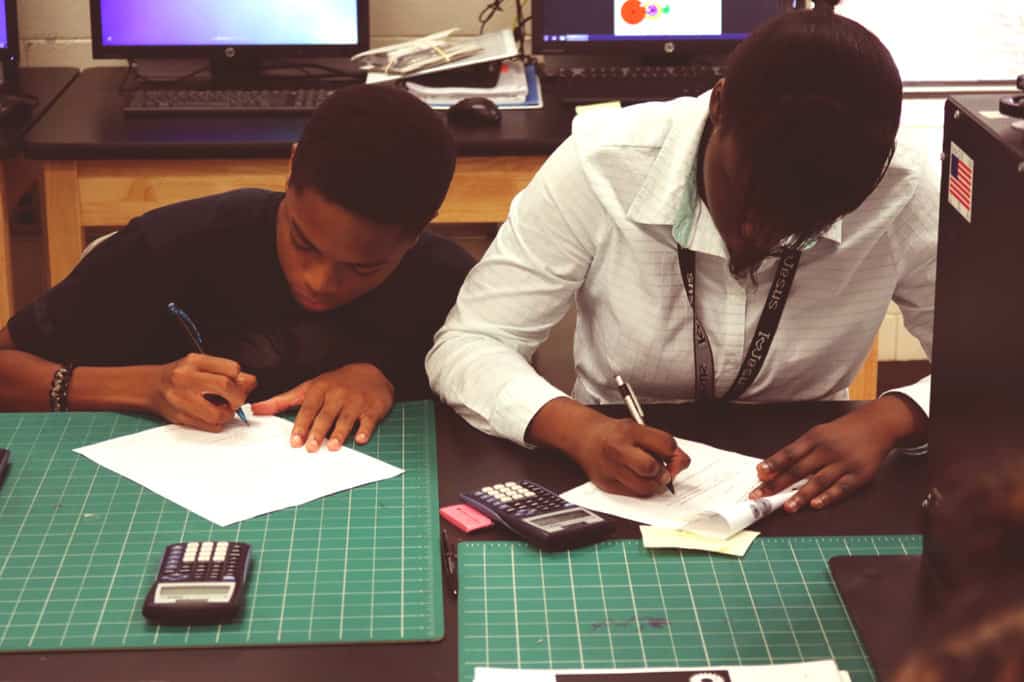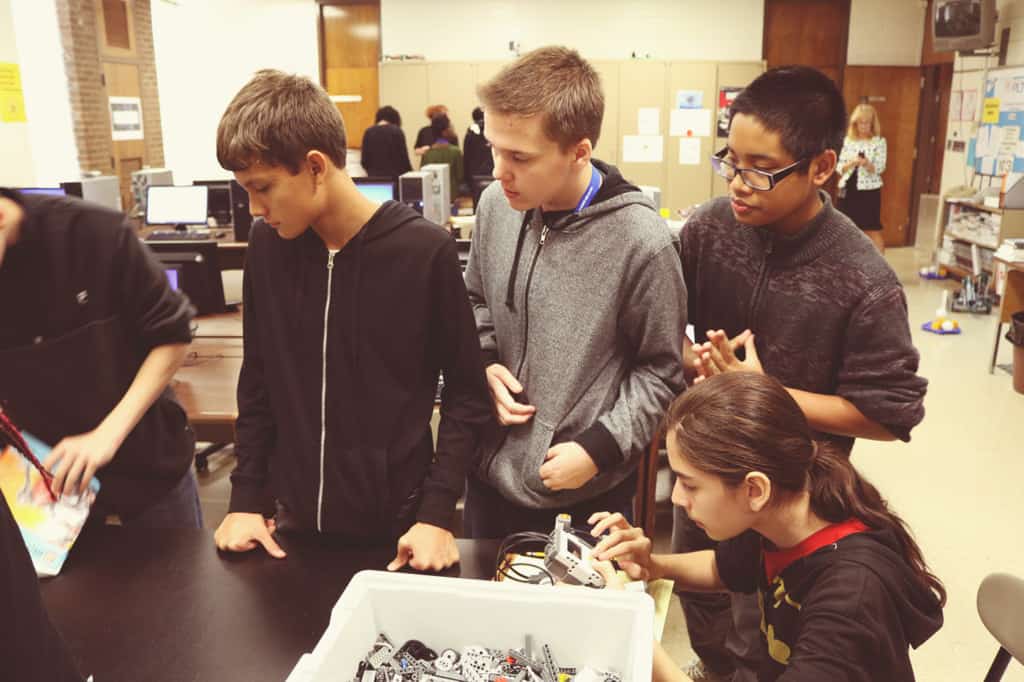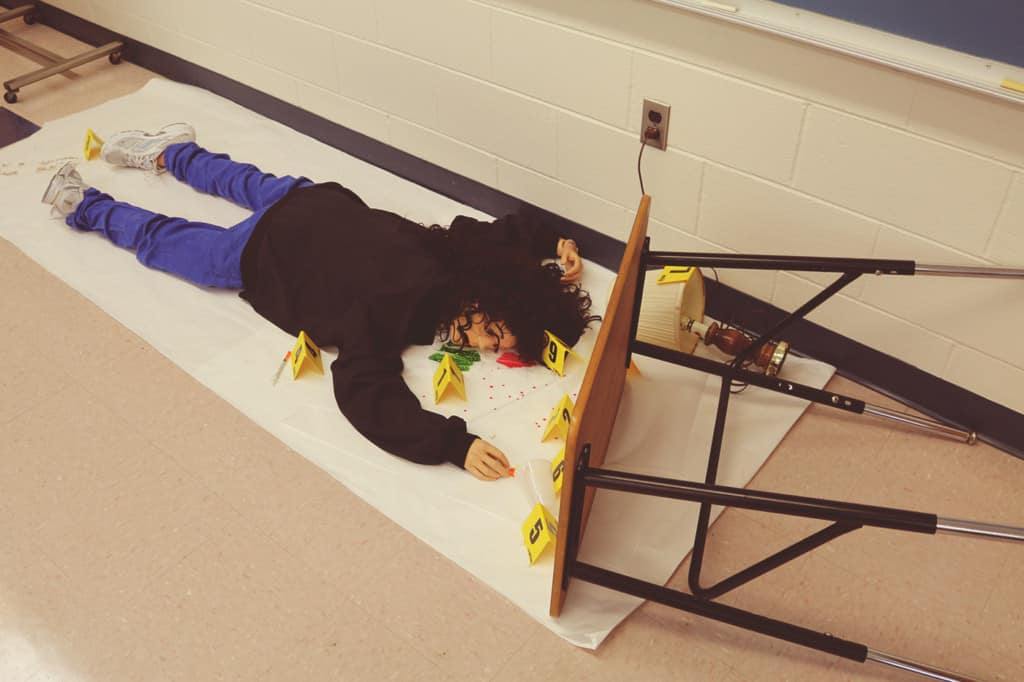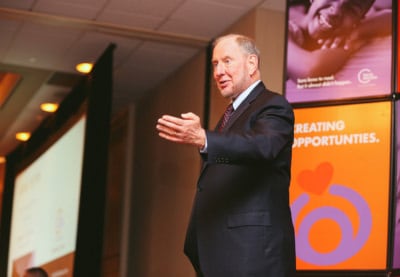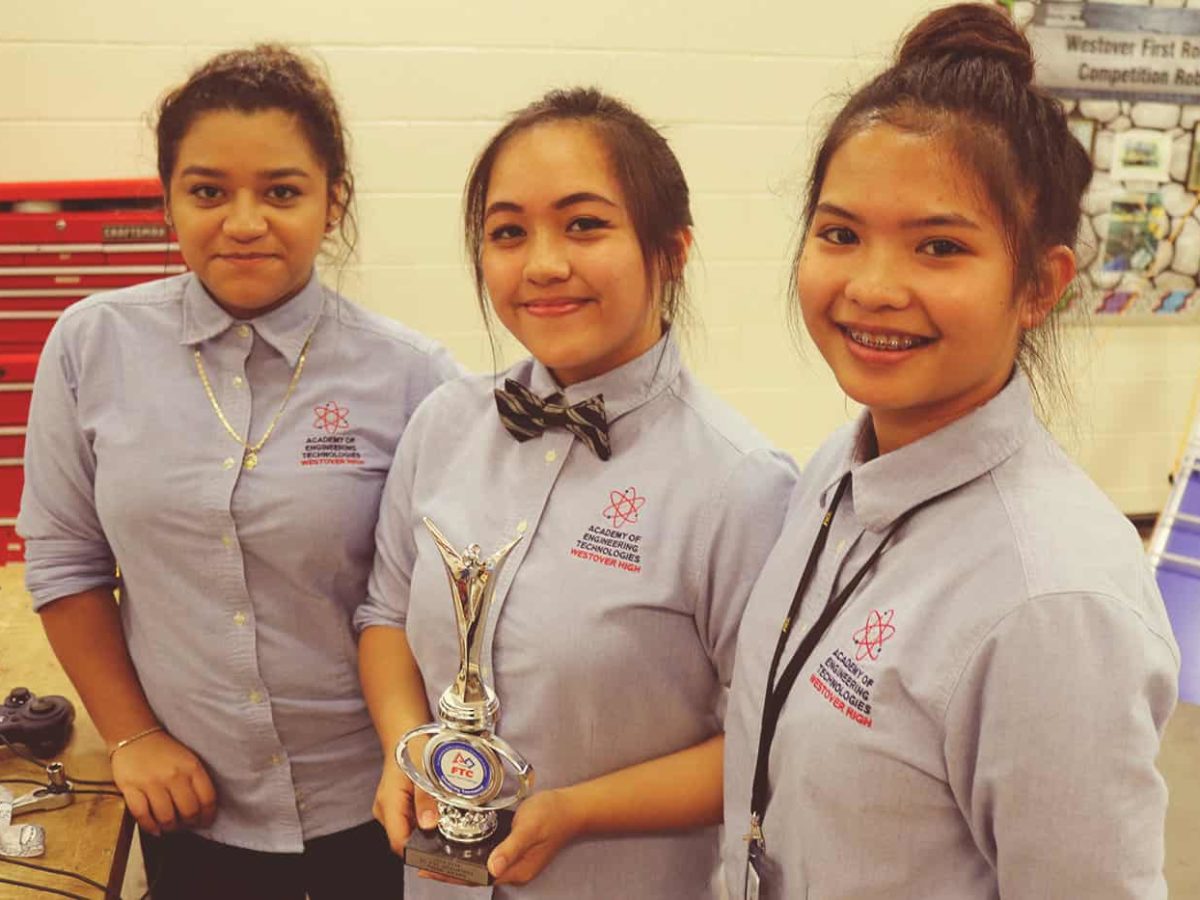
Ask Chip Lucas, executive director of career and technical education for Cumberland County Schools, about the dead body in his Westover High School classroom and his eyes light up. Don’t ask one of the students working with the body; they are too busy solving the case.
Welcome to Westover High School in Fayetteville where robots and medical sleuthing are the norm.
“It’s CSI meets medicine,” says Lucas, describing the scene in the class. The dead body is a mannequin the students have named “Anna Garcia.” The first time the students walk into their medical detective class the first thing they see is a crime scene. Anna is on the floor with clues scattered about.
“They see a mannequin with a chalk outline around it and they have to examine it and investigate the death,” Lucas says. “They don’t know what happened to Anna Garcia. The students are able to investigative the pieces around her–what they see and what they read as far as how she died. In the class, Anna Garcia dies a different way each year.”
But Lucas is not excited about the unfolding drama or figuring what caused Anna’s death in any given year. Lucas gets excited about the way the scenario excites the minds of the students in Westover High School’s Academy of Health Science. He is excited it gives them a challenge that exposes them to a wide swath of health-science disciplines.
“The project is on a platform that utilizes technology–a computer lab–and the students are able to investigate and find out what happens to her every year,” Lucas says. “We’re really excited about that. The Principles of Biomedical Science is what the students start out with. They then go into Human Body System, which is around anatomy. Then Medical Interventions and then Biomedical Innovations. We’re so excited that we’re able to put that last course in this year.”
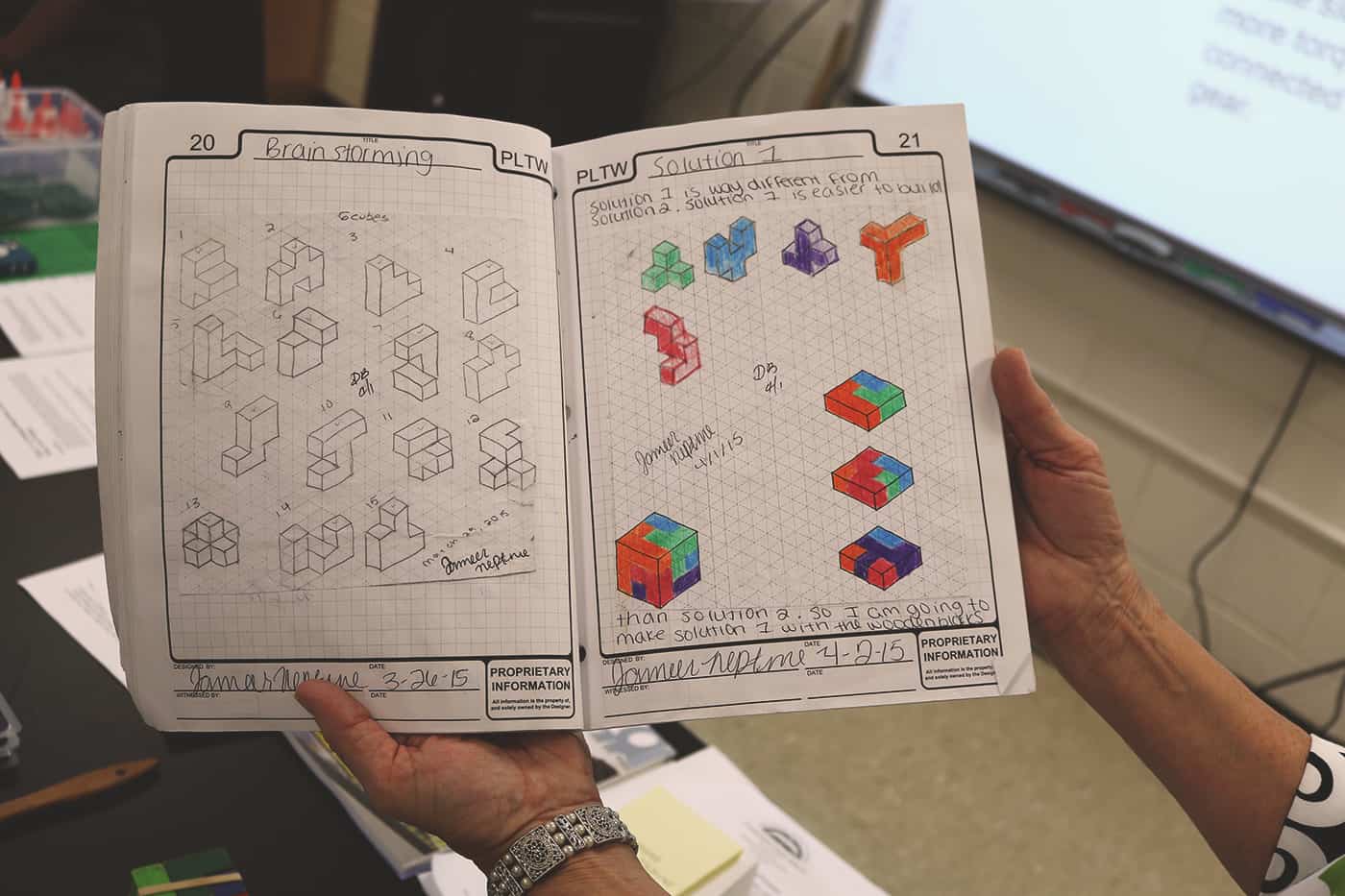
Westover High School is really three schools in one. There is the traditional high school, and within its walls are two separate career academies: The Academy of Health Sciences and The Academy of Engineering Technologies.
“The overall purpose of the academies is to give the students the opportunity to explore in-depth careers that they may be interested in,” said Jeannie Johnson, director of the two academies at Westover High School. Johnson hopes the academy setting will give students the confidence and foundation to pursue a postsecondary education and a meaningful career.
“We are hoping that we can ignite a fire that will motivate and carry them through their education process and into a meaningful career for them,” said Johnson.
Students in the Westover academies must take a minimum of five courses from ninth grade through 12th grade to complete the academic pathway in their respective academies, which are taken in tandem with their general high school courses. Academy students are required to maintain a 2.5 grade point average in all their courses and a 3.0 for their academy courses.
“We have provisions in place for students who are struggling and are not being successful in our classes. We may put them on probation, work with them a little extra, and encourage tutoring,” said Johnson. “Overall, we want this to be a very successful opportunity for them. Our objective is to build confidence and reassure students that they are on the right career pathway for them.”
Students in both academies work toward creating a professional portfolio. The portfolio work starts in the ninth grade, and includes things like cover letters and resumes. The portfolio works requires students to write biographies and reflection essays about their career opportunities, and it includes work samples from their classes as well as transcripts.
According to Johnson, work-based learning and community service opportunities are also part of the academy experience.
“We provide the opportunity for our students to participate in job shadowing and internships outside of school,” says Johnson. “Health academy students earn most of their work-based learning hours at Womack Army Medical Center.”
Students also can intern at other medical facilities around Fayetteville. Johnson notes that the office of local veterinarian Dr. Chris Faircloth is close to Westover. Students interested in veterinarian science can do an internship with Dr. Faircloth at her practice. Faircloth is also a graduate of Westover High School and serves on the board of advisors for the school’s Health Academy.
“All career academies have advisory boards that are made up of business partners, education partners, and of course, in our case, medical facilities,” says Johnson. “We also include a parent representative on the advisory board.”
According to Johnson, advisory boards meet once an academic season and for scholarship meetings.
“It is always helpful and informative to have academy advisory board members keep academy instructors abreast of changing trends they are experiencing in business and industry,” Johnson says.
Advisory board members also provide mentorship for academy students.
“Engineering advisory board members are very active when we start building our robots,” says Johnson.
“We have a number of engineers who volunteer to help us,” Johnson says. “They are very committed to what we do at the school and value the importance of their mentorship with our students. They work with students after school in a more informal environment, where students network with mentors to establish close relationships. Many seniors working on their Engineering Design and Development class project rely on the relationships they have established with mentors for professional guidance on their project.”
“Those academy advisory boards are very significant to our academies and to the success of our students,” says Johnson.
According to Johnson, the Academy of Health Sciences started last academic year with 115 students spread across grades nine to 12. The number had dropped to 93 by the end of the year. The Academy of Engineering began the year with 111, ending with 82.
Johnson explains there are a variety of reasons for the shrinking enrollment by the year’s end. “We live right outside the gates of Fort Bragg, and many of our students move during the year because of military reassignments,” says Johnson.
Another reason: Students may start in one of the school’s academies and then decide the experience is not for them.
“Some students may take the freshman-level or sophomore-level course and decide, conclude the career pathway they have chosen is not what they thought and choose to change their career pathway. In my opinion the academy has still served the purpose of helping students decide which pathway is right for them,” says Johnson.
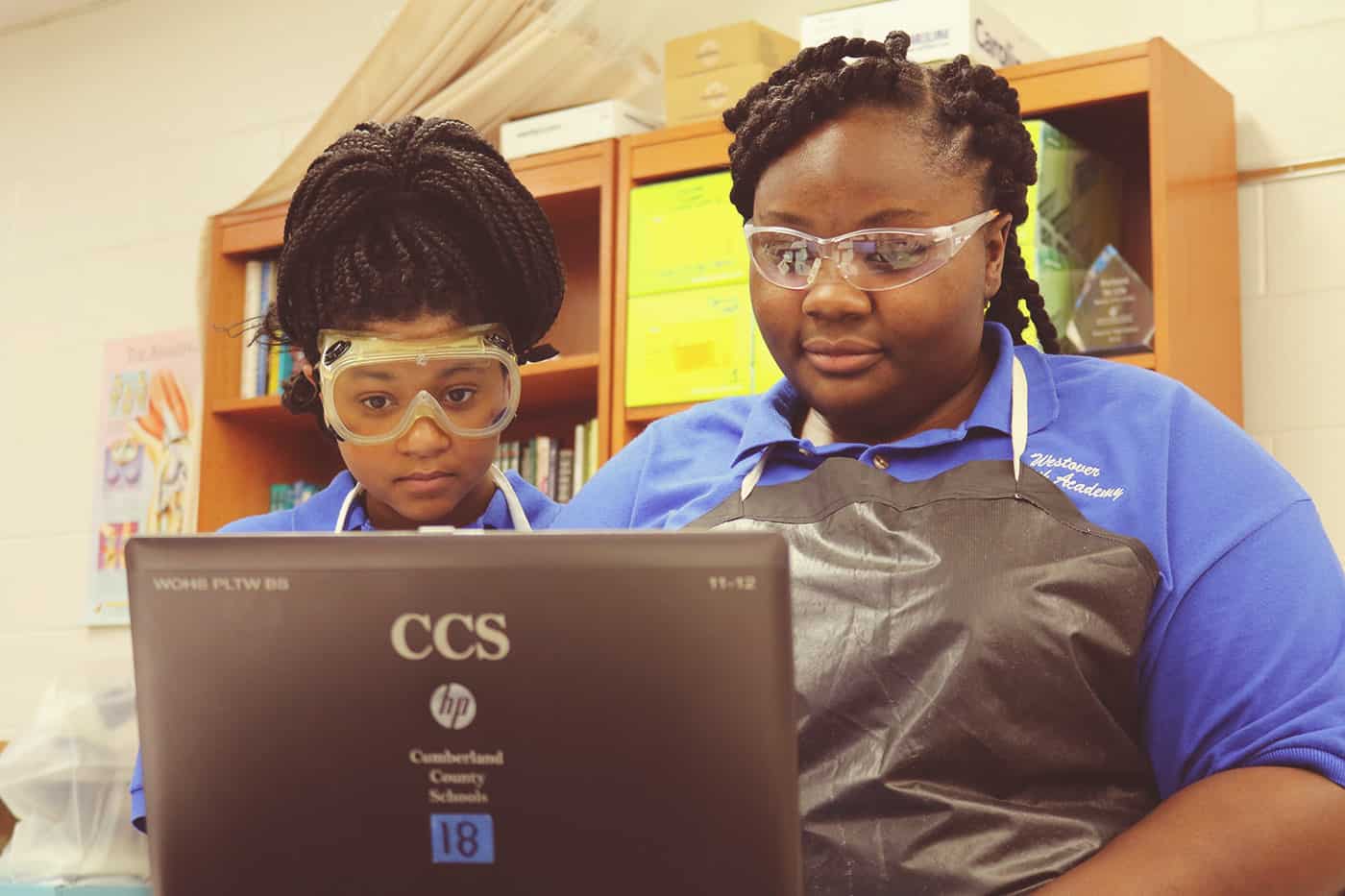
Students enrolled in both of Westover’s two career academies obtain various certifications and have the opportunity to earn college credit that can travel with them to a postsecondary institution.
Students in the Academy of Health Sciences learn CPR, first aid, and are trained to give vision screening, a skill that is soon put to use in a real-world setting. Students visit local middle and elementary schools to provide screening services for students at those schools.
Students in the Academy of Engineering are required to take a 10-hour Occupational Safety and Health Administration safety training program.
“We feel it is important for students to be certified in safety to ensure their personal safety as well as the safety of others,” says Johnson.
Staff at Westover and representatives of Cumberland County Schools speak frequently about the need for college and career readiness. In Cumberland County, that means college credit earned through the Project Lead the Way curriculum and through a partnership with Fayetteville Technical Community College. “The FTCC High School Connections is a local branding name at our community college for the North Carolina Career and College Promise,” says Lucas. “The FTCC High School Connections program is dual credit meaning students are able to earn college credit.”
Through the FTCC High School Connections, students in Cumberland County can opt for a portion of their day to be spent taking classes at Fayetteville Tech. By having access to additional courses at another institution, students can earn additional career certifications or begin earning credit to put toward a future associates degree program.
“Last year was the first year that we really got involved here at Westover High School in the High School Connections classes,” Johnson says.
Johnson points out a listing of courses offered at Fayetteville Tech that are available to her students through the FTCC High School Connections program and which can be applied to fulfilling the course requirements of their programs. For the Health Academy students that list includes courses like Certified Nursing Assisting, Health and Fitness Science, Medical Billing and Coding, and Emergency Medical Science. For the Engineering Academy students, it is courses like Collision Repair, Computer Technologies, Graphic Design, Network Defense, Simulation and Game Design, Computer Integrated Manufacturing, and Sustainable Architecture.
The problem for the Westover academy students is making it all fit. Westover is a traditional high school, so students take their academy courses in tandem with their other traditional courses. Students have the availability to take eight electives throughout their four years, five of which are required to go to the Project Lead the Way courses for their particular academies. The FTCC High School Connections program requires four classes. That means a student participating in both the academy and connections program may be short one class for graduation.
“What has happened over the summer is that some of our students have opted to take a summer school class to free up a slot so that they could take advantage of the FTCC opportunity and still graduate on time,” says Johnson. “Some of them are taking virtual high school classes to also make up for the shortfall of not having enough time in the day to work out all of the courses they are interested in.”
And according to Lucas, because the FTCC High School Connections is a North Carolina Career and College Promise program, students’ tuition is waived for their FTCC courses.
Lucas describes the relationship between the school district and Fayetteville Tech as being “awesome.”
“It’s been great for years,” says Lucas.
Lucas says the partnership between the district and FTCC has experienced record enrollments. “In Career and Technical Education (CTE), we have 100 course offerings at the college.”
For Lucas, the relationship between the two institutions means the county’s students have options. “We are able to support CTE programs in the schools, as well as try to innovate programs in the schools,” says Lucas. “But we don’t have enough money to put a program in every high school. We work with FTCC to have offerings available in the afternoon where students can get on the bus at their home school, go over to the college, take the coursework in a pathway–whether it be welding, engineering, etc. and then hop on that bus to go back to their regular school.”
The issue of transportation was a logistical hurdle for the district but one it was willing to commit the resources to develop. Creating a transportation route between district high schools and FTCC meant that students could take a course that might not be available at their own school.
“We can’t put an automotive or collision shop in every building,” says Lucas. “We have one collision shop county wide and we have two automotive programs county wide. If I’m at Grays Creek High School, where they have no shop, and I want that, I can hop on the bus and come over to FTCC to take it.”
The relationship between the two institutions continues to grow. Lucas says an early college just opened on the FTCC campus this year.
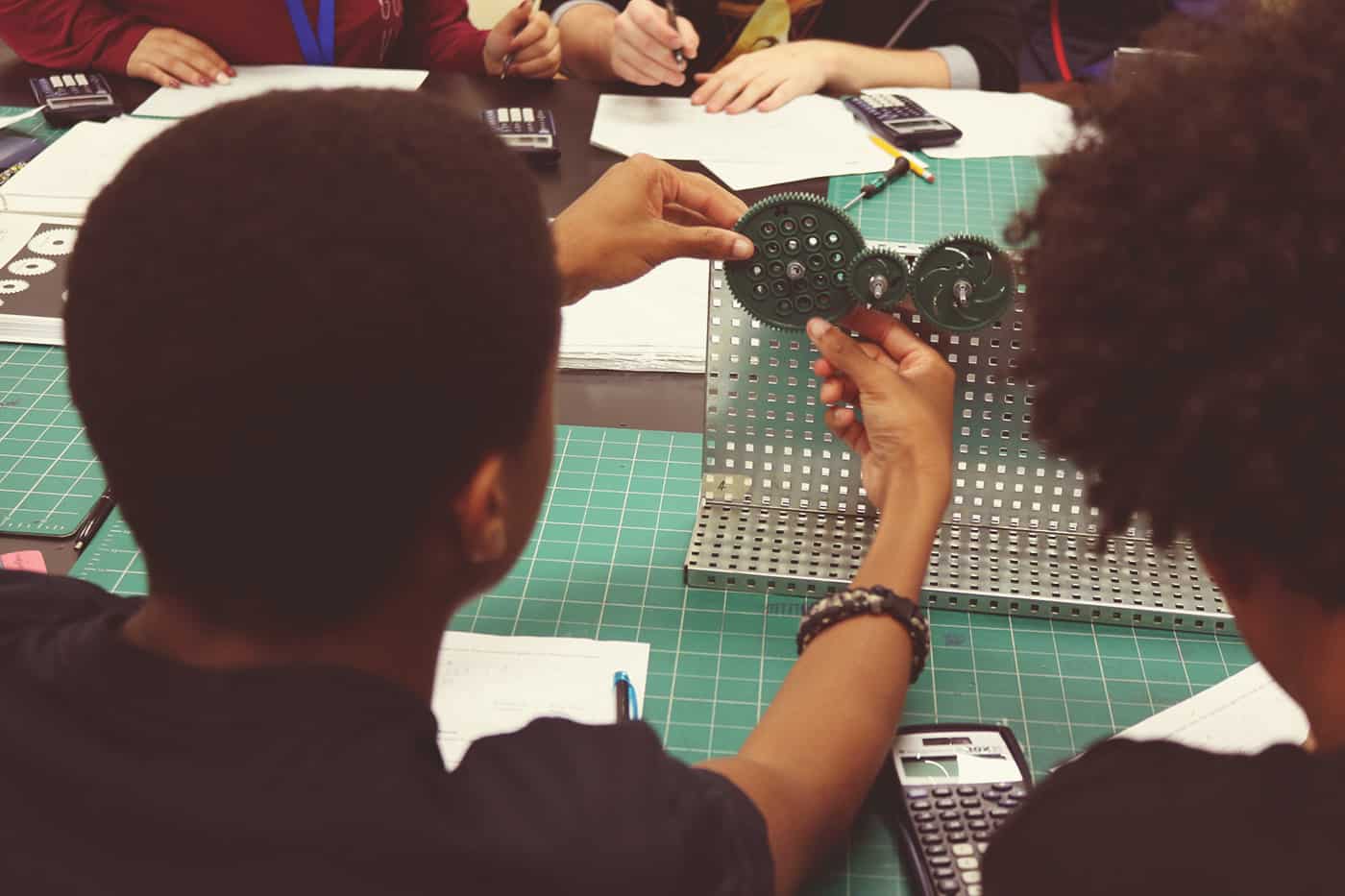
“We teach Project Lead the Way in both the Academy of Health Sciences and Academy of Engineering,” says Johnson. According to the Project Lead the Way website, the nonprofit organization, “… empowers students to develop and apply in-demand, transportable skills by exploring real-world challenges.”
According to Johnson, there are more than 6,500 Project Lead the Way schools in all 50 states and in the District of Columbia.
Because there are so many Project Lead the Way schools across the country, Johnson think it’s a great asset for a town with a large military population.
“If a student should leave here and move to Texas, and should happen to attend a high school in Texas that also teaches Project Lead the Way courses, then the student will be able to pick up right away and carry on with the foundation courses that are required for them,” Johnson says.
In addition to the three foundation courses required for each academy Project Lead the Way curriculum, seniors must complete a capstone course in their final year. For the engineering students it is a course in Engineering Design and Development. For the health sciences students, it is Biomedical Innovations.
Johnson notes that Westover High School became the state’s first Project Lead the Way school in 2001. The Academy of Engineering was first, and then six years ago, the school decided to transition the Academy of Health Sciences to a Project Lead the Way curriculum and away from the typical health occupation courses offered through the Department of Public Instruction.
“We felt that as the only health academy in Cumberland County we needed to offer a different option,” says Johnson. “So Project Lead the Way was our answer, and that made both academies here Project Lead the Way schools.
According to Johnson, all Project Lead the Way instructors are trained state affiliate college or university.
“Westover’s engineering instructors went to Duke University for their training and the health academy instructor attended Stephenson University and the University of South Carolina,” Johnson says. “It was two weeks of pretty intense training … These teachers are highly trained.”
In addition to providing a set curriculum and teacher training, Johnson also notes that Project Lead the Way specifics the equipment, supplies, and computers for each academy’s lab.
The curriculum is hands-on, with teachers acting as facilitators working with the students and directing them in their individual projects.
Project Lead the Way provides the school third-party, end-of-course testing. Depending how well the students score on those tests, some could end up with college credit.
“Project Lead the Way uses a stanine score of 1-9 for end of course test. Students who earn a stanine score of 6-9 and have a final course grade of 85 percent or higher can establish a college transcript with a college or university that affiants with Project Lead the Way. Students can earn from one to three hours of college credit,” Johnson says.
According to Johnson, students who score high enough to receive college credit can request a transcript with a course fee between $150 and $200 dollars for three hours. The reality is that not all of Johnson’s students take advantage of the opportunity. The reason? Cost.
“Unfortunately, I don’t have that many students that take advantage of this opportunity, even though they have scored proficient, very few of them do,” Johnson says. “I think it is a cost factor. For students and families who are struggling financially anyway…it is the sad reality.”
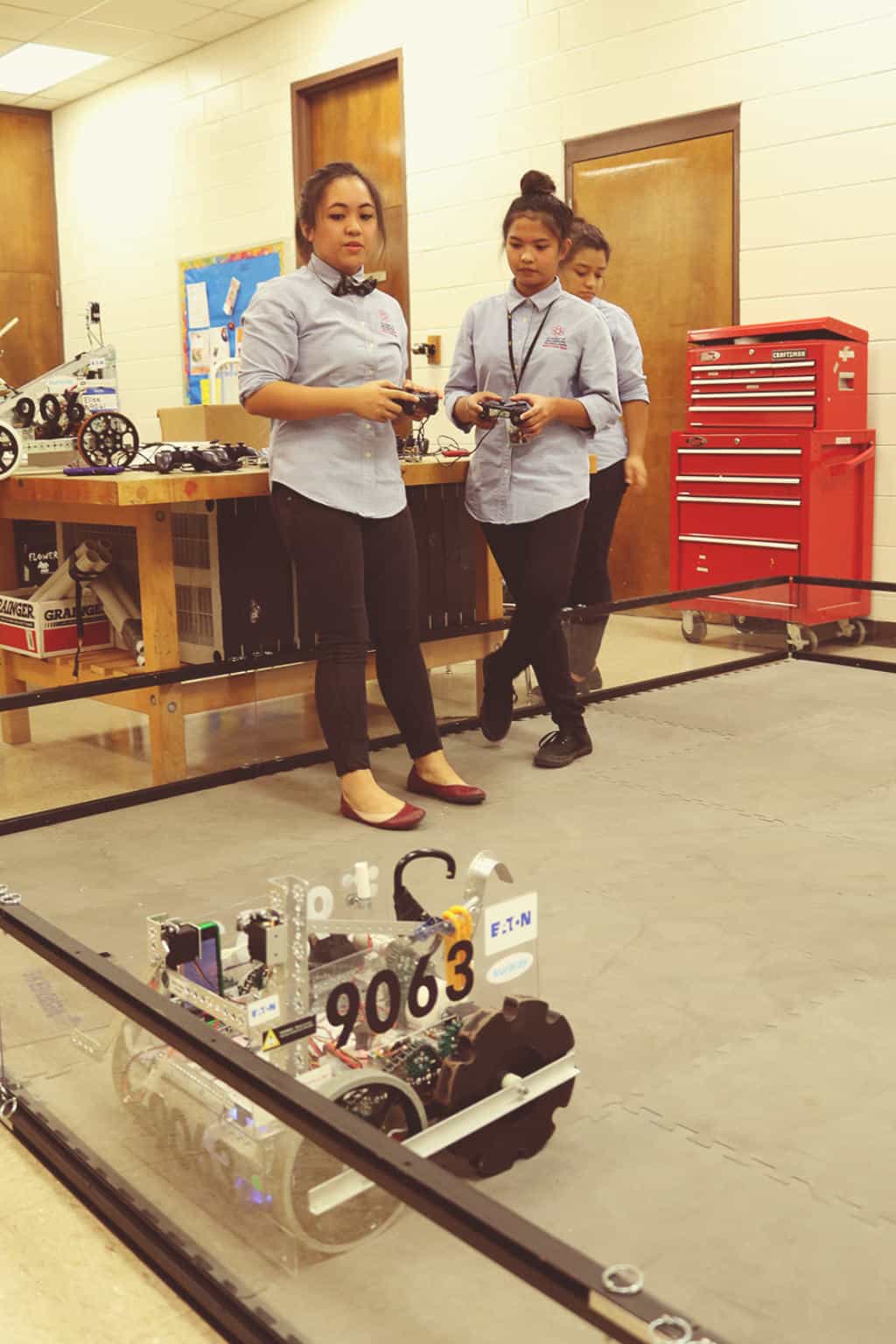
Lucas sees the academies at Westover and the relationship with FTCC as the start of a wider and deeper effort to introduce Cumberland students to career and technical education pathways and future STEM careers.
“We can’t just start in the high school,” says Lucas. “We’ve got to push it down to the middle school.”
“Those kids need to know about STEM, technology, prior to going to the high school,” says Lucas. “If you hear and listen to what industry and businesses are saying, career and college readiness needs to begin in kindergarten.”
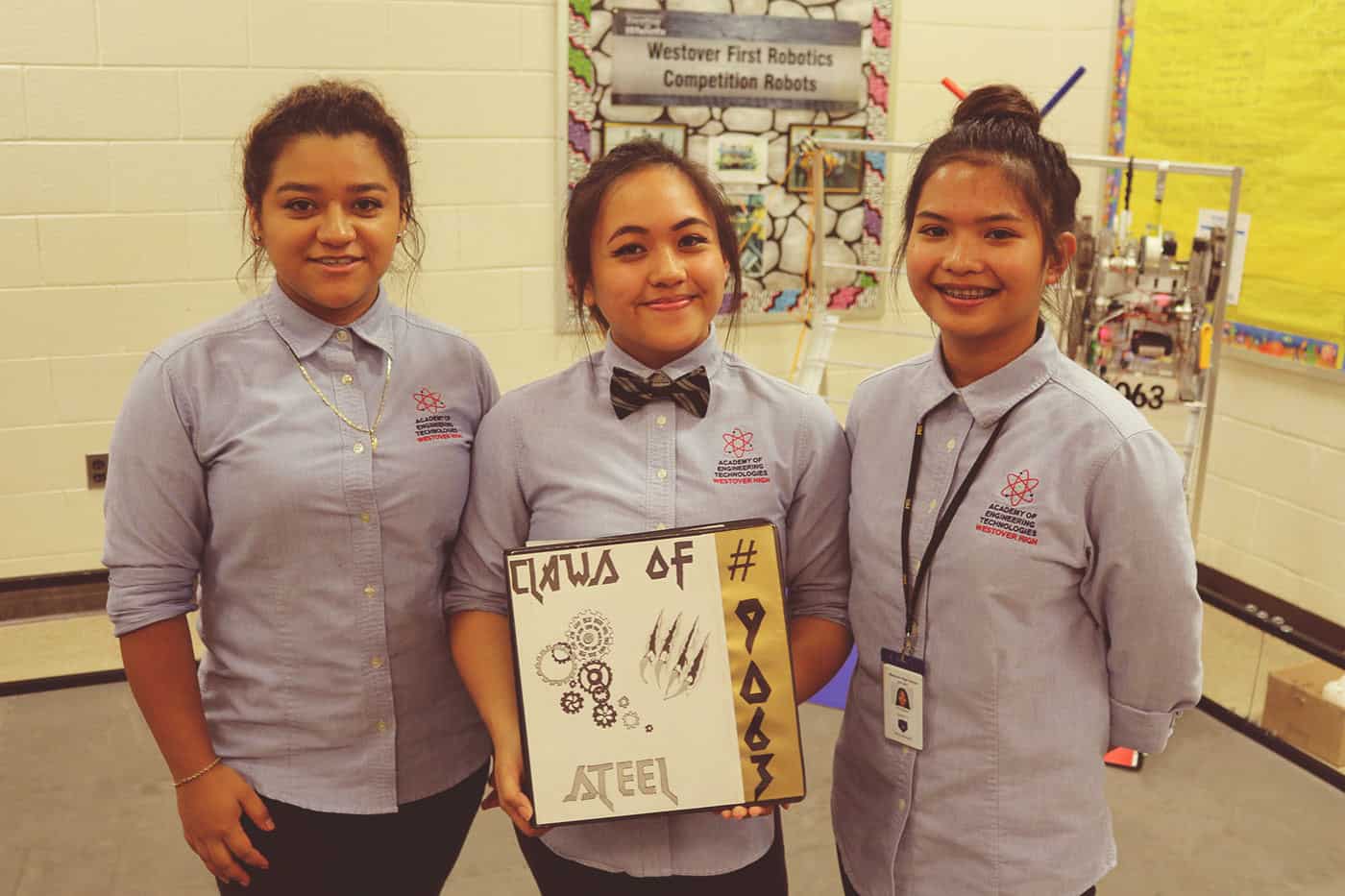
Even as a child, Tatiana Adamson was a natural tinkerer. If something broke around her grandmother’s house, she was the one who fixed it. At Westover’s Academy of Engineering, she has put that problem solving skill to building robots.
“At home, it’s just me and my grandma,” says Adamson. “She breaks everything.”
When their television stopped working, Adamson asked her grandma if she could take it apart. Her grandmother agreed and Adamson disassembled the television, fixed the problem, and put it back together.
Adamson heard about the Academy of Engineering when she was in middle school. She decided to look into it when she got to Westover.
As she sits at a laptop teaching herself to code, Adamson reflects on her time in the academy.
“When I came here freshman year, I thought it was going to be super hard,” Adamson says. “And then after awhile, once you get use to the math, once you just learn the math, it’s like, ‘Oh, it’s just doing the same thing over and over again.’ I just got use to it.”
Adamson was preparing to start job shadowing with engineers at Fort Bragg.
“Most of them are mechanical engineers,” says Adamson.”I’m hoping that by the time I finish job shadowing with them I’ll know what I want to major in.”
It was exposure to the academy’s mentor network that prompted Adamson to take it upon herself to learn computer coding.
“The mentors that we have, that come here, they told me that even if I do civil or mechanical engineering, I might have to do programming,” says Adamson. “So I was like, ‘Oh, might as well learn it.'”
Adamson has college applications in to schools like N.C. State, North Carolina A&T, Georgia Tech, and MIT. She plans to major in either civil or mechanical engineering.

Watch a student-produced video documenting the Academy of Engineering students competing in the 2015 FIRST Robotics competition.
https://youtu.be/WWawhaqREbs


